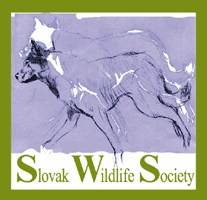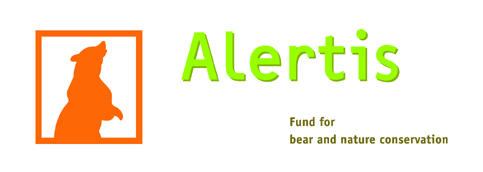

Project diary 2009

December
With snow falling in earnest, temperatures down to -20°C and most bears in our area likely to be inactive ahead of Christmas, preparations proceeded apace for our new project, "White wilderness: winter wolf and lynx tracking in the Tatra mountains of Slovakia". Still, as tracks in Kremnické Mountains on 28th December show, some bears can be active in winter, especially if higher temperatures melt snow or there is enough food available.


Photographs: Martin Šmida
It might seem that the problems we experience are unique to the country we live in, but this is often not the case. Carnivore-human conflicts are no exception. I have recently been contracted by Fauna & Flora International as a Human Carnivore Conflict specialist for the Georgia Carnivore Conservation Project. Early this month I spent a week there meeting not only the people implementing the project but also those directly affected by large carnivores. The main project area is in a semi-arid region bordering Azerbaijan, with wolves (we heard them howling), bears, lynx, jackals and, more rarely, leopard and striped hyena. We interviewed several of the farmers who have lost livestock to predators, especially wolves. Some of them got out their homemade "cha cha" (a potent spirit distilled from grapes) and wanted to slaughter a sheep in honour of us, their guests! My first brief impressions were of a beautiful country populated by wonderful people. It will be fascinating to compare their experiences with those we regularly encounter in Slovakia.

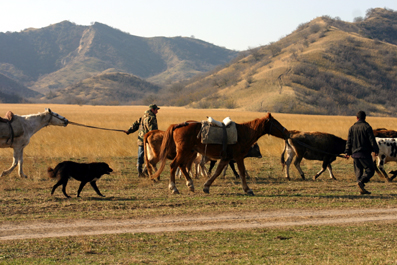
Photographs: Robin Rigg / Fauna & Flora International
November
The launch of a new book on wolves was a good opportunity to catch up with old friends and colleagues and lay plans for new collaborations. The title of Marco Musiani, Luigi Boitani and Paul Paquet's fine work, "A New Era for Wolves and People", says it all. Wolf conservation is as much about people as about animals. The human dimensions of ethics, attitudes and policies often play a bigger role than the physical environment or biology. One of the chapter authors, Alistair Bath, has extensive experience of reconciling the conflicting positions of different interest groups, for example in facilitating the development of management plans in Croatia and Bulgaria. In Slovakia, some aspects of wolf conservation have changed little since I first came here in 1996. Environmental activists still call for the full protection of wolves, which they say are in imminent danger of eradication, while hunters want to kill more wolves, because they think there are too many. Unless people are willing to sit down together and find compromises, such conflicts will never be resolved. We hope that Alistair can work his magic in Slovakia as he has done elsewhere. Thank you to the UK Wolf Conservation Trust, organisers and hosts of the event, and to the Wolves and Humans Foundation for covering my travel expenses to attend.October
I spent a lot of time early in the month getting in wood to heat our office and home in the winter, which was just as well, because on the 13th the Arctic suddenly arrived in Liptov. A friend and fellow SWS-founder member, David Lintott, and I had planned to go camping that week. We left the tent at home and decided instead to head for a log cabin, but we still got some incredulous looks as we road the bus to the last stop and headed out into the mountains. The snow was just starting to settle as we set off but by the time we came back down after two nights in the cabin we had to plough our way through 40-60 cm! We found no signs of bears in our part of the Western Tatras and most of the deer had gone down to lower elevations, but we came across fresh tracks of a couple of wolves.


Photographs: David Lintott, Robin Rigg
September
We have been working with Lukáš Gejdoš on a full update of the website. We are really excited about the design and hope to have the new version ready for uploading either later this year or early in 2010.As usual, the orchard in our village has been visited by bears several times in the autumn. Very few people pick the apples and plums anymore, which means there is plenty of food left for bears as well as the deer which visit under cover of darkness. We have also been monitoring bear activity around beehives in the Liptovský Hrádok area. While bears have damaged those belonging to the Beekeeping Deparment of the Research Institute of Animal Production, both at their headquarters in Celiny and at Maša, the beehives in the adjacent plot have had no problems since we helped Mr. Zábojník instal a bear-proof electric fence in November 2008. Beehives near Turie, Žilina, have also been untouched since we installed a similar electric fence in June this year. We are working with the Wolves and Humans Foundation to set up the White Dog Fund so that we can raise enough money to help more people cope with having large carnivores on their doorstep.



August
Showing people bears isn't always easy and sometimes you need some luck as well as experience. Photographer and writer Paul Glendell visited us for 3 days to gather material for an article on wildlife in Slovakia that he has been commissioned to write for BBC Wildlife Magazine. On our first morning walk I managed to get him to within 100 metres of a bear, but although we heard it and found where it had just dug out a wasp nest, it was hidden from view among raspberry bushes. As Paul needed good photographs of animals for his article, we focused the rest of his stay on observing chamois and marmots, with excellent results. The next day I was booked to guide a "Bear Expedition" that Magda from Brno had organised for her father's birthday. I was determined not to disappoint them on such a big occasion, but I didn't expect us to be quite so successful: less than 2 hours after starting out from their hotel all of a sudden we were looking at a bear cub on the track 12 metres in front of us!My first thought after "Wow!" was "So where's mum?" She was a few metres behind the cub, already calling it with breathy huffs. We watched as the cub scrambled its way to her, turning to look back in curiosity. We'd hardly begun to recover from that when another cub popped up onto the track and after a brief stop headed after the rest of the family. I think they had spread out while feeding on hazelnuts and we had almost walked right in amongst them. This was a precarious position to be in, but we stayed together as a group and backed off a little to give the bears room, which was enough to diffuse the situation. Back at the hotel, the waiter told us he has been collecting mushrooms in the surrounding forest for many years but has never seen a bear. That made us feel even more lucky!

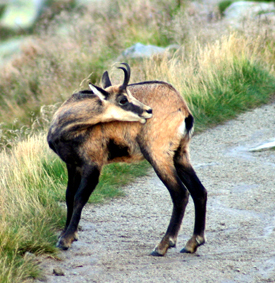




It was a big disappointment for us to find that our bear-proof bin at Hrebienok has been removed. Despite regular problems with bears feeding on refuse at this location, it took months for us to persuade the responsible authorities to instal the first of three – as they claimed - such containers in 2008. As shown by our trial with bears in Košice Zoo, the container is certainly bear-proof, so we would be interested to know why it was removed without anyone informing us. On the positive side, it was good to see that the area was noticeably cleaner than last year, which is another important step to reduce unwelcome visits of bears or other animals.






It's not far from Liptovský Ján to where we live so I decided to walk home after the dinner at the end of the conference. There was no moon just after one in the morning but I could see enough to follow a track at the forest edge. As I was going through a narrow channel between trees I suddenly heard a loud munching sound coming from the edge of the field on my left. "That sounds like a bear", I thought, and so it was. It was feeding on the tops of oilseed rape, but as I tried to sneak past it heard me and reacted by heading back towards the forest, coming out onto the track and huffing agitatedly. I had my pepper spray out, just in case, and hunkered down at the side of the track thinking if it didn't see me it might just head off into the forest. No. It came down the track to investigate. I saw it through the gloom when it was less than 20 metres away. More ...
June
It's a proud moment for me as I have been invited to become a member of the IUCN/SSC Bear Specialist Group, whose goal is to promote the conservation of bears and their habitats across their distribution world-wide. For the next four years I will be serving in a new expert team on human-bear conflicts. This is a sphere I've been working in since 1998, first with livestock guarding dogs, then with bear-proof bins and more recently with bear spray and electric fences, another of which we have just installed around beehives near the village of Turie.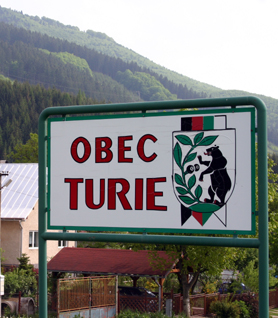


The quite demanding schedule of recent weeks has finally caught up with me: I fell ill at the end of May and can't seem to shake off a chronic throat infection, despite three courses of antibiotics. I've been signed off from the biology teaching I usually do at a local bilingual school and missed out on taking part in this year's census of bears in Malá Fatra National Park. Still, all this extra time at home has given me a chance to catch up on orders of bear spray and DVDs as well as to finally update this diary.
At the end of the month Simon and Tzach Meslati, newly qualified vets from Košice University of Veterinary Medicine, helped analyze samples for our study of bear diet. Since 2001 we have collected more than 800 bear scats (faeces), which will give us a good picture of what they eat in the Tatras.
May
Another very busy month. It started out with getting the office set up, re-installing an electric fence and fladry at a sheep farm in Jamník and collecting some more samples for Simon's parasite study. We then hosted a 5-day Study Tour for UK professionals and students interested in finding out more about the realities of life with large carnivores. The trip was a follow-up to the "Wild, free and coming back?" conference held in Scotland last September and examining the possibilities for reintroducing lost species to the British Isles. I am really pleased to have the chance to be involved in this, as when I came to Slovakia from Scotland in 1996 one of the ideas I had in mind was to apply what I learned here to the situation back home.


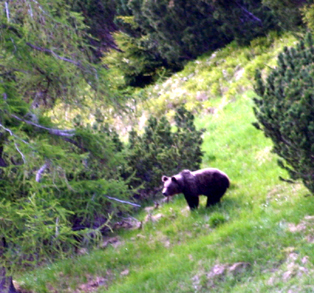


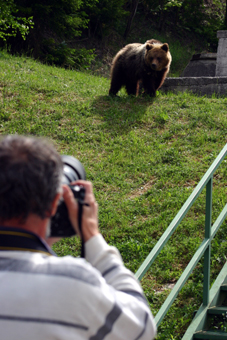


April
This has been a BIG month for us. Following on from moving into Svetlana's grandparents' old house in Liptovská Porúbka at the end of March, I had to paint and lay a floor in the basement ready for our new office. We also went through the nearly 2,000 entries that flooded into our latest competition from right acrosss Slovakia and beyond and just about managed to choose the winners before the birth of our second son, Jerguš, on 21st.In between all that we hosted Matthias Hammer and Kate Curnow of Biosphere Expeditions in order to finalize arrangements for a joint expedition. "White wilderness: winter wolf and lynx tracking in the Tatra mountains of Slovakia" will build on from the census work we did in December-February. Book your places on this exciting adventure now!

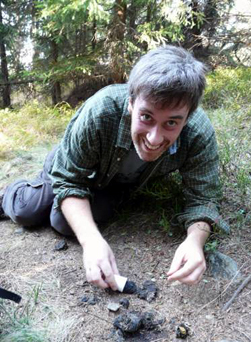
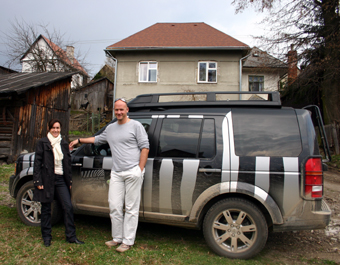
Photographs: Robert Hlavica, Robin Rigg
March
Thanks to an Experience and Exchange Grant from the IBA, I spent most of March as a guest of Dr. Urmas Saarma at the University of Tartu in Estonia. Dr. Saarma's research is using genetic analysis to retrace the steps of bears as they spread out across Europe following the end of the last glacial period. His findings so far suggest that Estonia's bears might have come from the area of present-day Slovakia. The visit gave me a chance to meet his team and to learn laboratory procedures for DNA analysis. We also got lucky out in the forest, when tracks led us to where a bear had made its winter bed from broken off branches under a young spruce tree, less than 200m from where our car was parked out on the road. For their kindness and teaching I'd like to thank Urmas along with his research students: Marju Korsten, Egle Vulla, Maris Roht and John Davison.
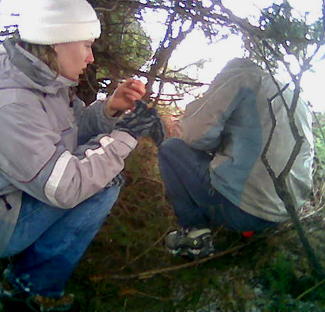

February
The wolf groups I've been tracking this winter have all been rather small, averaging around 2 individuals. When we were working on the Slovakia Wolf Census Project in 2005/06, and even in 2007 and 2008, wolf packs in this area had 5-6 members. The difference could just mean that packs have split into smaller sub-units (perhaps in relation to the breeding season, dispersal or prey availability) but it could also indicate a decrease in the population. We plan to do further work to try to find out what's happening. A more encouraging sign was following a lone wolf as it crossed a minor road and then passed under a bridge carring the main D1/E50 highway between the Low Tatras and Tatras National Parks. This shows that this transport corridor is not an impenetrable barrier to wildlife, which is important if populations are not to become fragmented and therefore more susceptible to decline.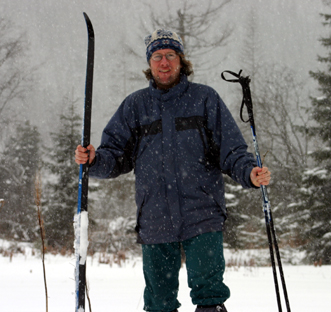


January
With bears in our area sleeping soundly in their dens or keeping close by them, we focussed our winter fieldwork on tracking wolves and lynx. I covered more than 200km on foot, cross-country skis and snow shoes. While following tracks of 2 lynx in Čierný Váh on 25th Michal, Viera and I found the remains of a young roe deer that the lynx had probably killed just a few hours earlier. The partially eaten carcass was near the edge of a small clearing in an area with signs of recent logging. There was very little evidence of pursuit or struggle, so presumably the deer had been taken by surprise and quickly killed. Some of the surrounding snow had been scraped towards the carcass, possibly to cover it, and there were 2 separate sets of tracks of 2 lynx leading both to and from the site, so they must have left and then returned to feed. There were also marks showing where the lynx had played: jumping and sliding on the snow.



